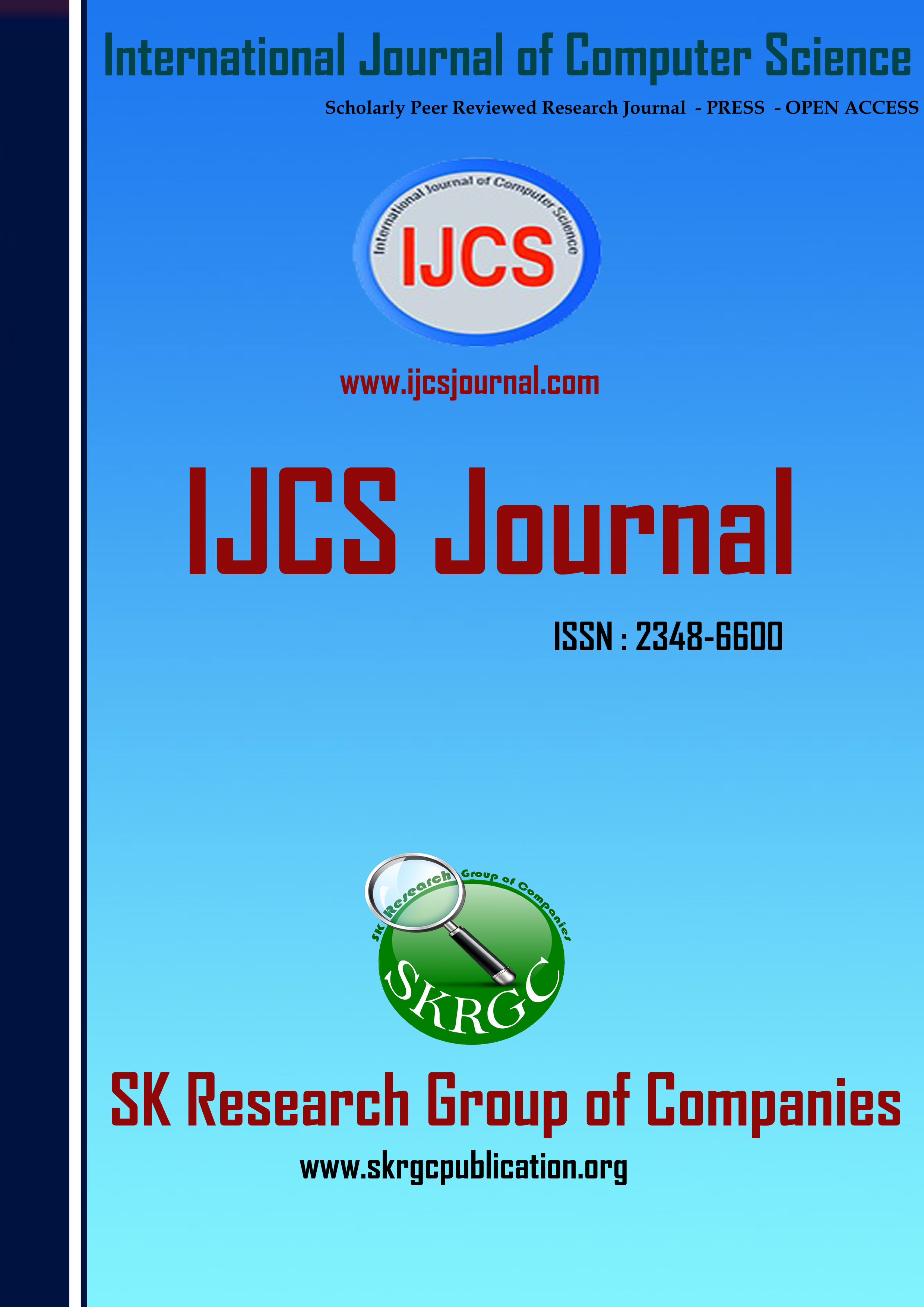A Novel Framework Using Phishing Prevention and Detection
International Journal of Computer Science (IJCS) Published by SK Research Group of Companies (SKRGC)
Download this PDF format
Abstract
A way to deal with identification of phishing pages in view of visual similitude is proposed, which can be used as a piece of a venture answer for hostile to phishing. A genuine page proprietor can utilize this way to deal with look the Web for suspicious website pages which are outwardly like the genuine site page. Our propose build up another neuro-fuzzy approach without utilizing IF-THEN guidelines to distinguish phishing. They are inspired by an earlier report that utilized the traditional neural system display. Consolidating the neural system with the fuzzy model, acquire a decent outcome as far as recognizable proof exactness. Besides, our framework can accomplish ongoing reaction and stable execution to recognize phishing URLs. This approach will break down the vindictive substance as opposed to include, enhancing the proficiency of phishing recognition. So this undertaking is gone for finding the control based identification technique for distinguishing phishing. Phishing assaults for the most part influence the unmindful and reckless individuals. Instructing individuals on phishing mindfulness turns out to be ineffectual, on the grounds that new and local clients add to the stream each day. So if the proposed framework is executed in the program, it will naturally identify the phishing sites and caution the client while perusing. Fundamental investigations demonstrate that the approach can effectively recognize those phishing website pages with a couple of false alerts at a speed satisfactory for online application.
References
[1] Y. Zhang, J. I. Hong, and L. F. Cranor, ?Cantina: a content-based approach to detecting phishing web sites,? in Proceedings of the 16th international conference on World Wide Web. ACM, 2007, pp. 639–648.
[2] PhishTank. Accessed Nov 2015. [Online]. Available: https://www. phishtank.com/stats/2014/01/.
[3] S. Sheng, B. Wardman, G. Warner, L. F. Cranor, J. Hong, and C. Zhang, ?An empirical analysis of phishing blacklists,? in Proceedings of Sixth Conference on Email and Anti-Spam (CEAS), 2009.
[4] V. M. Gandhimathi K1, ?Identifying similar web pages using scoring methods for web community mining,? in Proc. of Int. Conf. on Advances in Computer Science, AETACS, 2013.
[5] B. B. Gupta, A. Tewari, A. K. Jain, and D. P. Agrawal, ?Fighting against phishing attacks: state of the art and future challenges,? in Neural Computing and Applications, 2016.
[6] Fog computing and the internet of things: Extend the cloud to where the things are. [Online]. Available: https://www.cisco.com/c/dam/en us/ solutions/trends/iot/docs/computing-overview.pdf.
[7] Y. Li and M. Chen, ?Software-Defined Network Function Virtualization: A Survey,? IEEE Access, vol. 3, pp. 2542–2553, 2015.
[8] G. Xiang, J. Hong, C. P. Rose, and L. Cranor, ?Cantina+: a feature-rich machine learning framework for detecting phishing web sites,? AC Transactions on Information and System Security (TISSEC), vol. 14, no. 2, pp. 1–28, 2011.
[9] W. Hadi, F. Aburub, and S. Alhawari, ?A new fast associative classification algorithm for detecting phishing websites,? Applied Soft Computing, vol. 48, pp. 729 – 734, 2016. [Online]. Available: https://www.sciencedirect.com/science/article/pii/S1568494616303970.
[10] L. T. C. James, J. ; Sandhya, ?Detection of phishing urls using machine learning techniques,? in Control Communication and Computing (ICCC), 2013 International Conference on, 2013, pp. 304–309.
[11] M. Aburrous, M. A. Hossain, K. Dahal, and F. Thabtah, ?Intelligent phishing detection system for e-banking using fuzzy data mining,? Expert systems with applications, vol. 37, no. 12, pp. 7913–7921, 2010.
[12] A.N. V. Sunil and A. Sardana, ?A pagerank based detection technique for phishing web sites,? in Computers & Informatics (ISCI), 2012 IEEE Symposium on. IEEE, 2012, pp. 58–63.
[13] Chowdhury A. Duplicate data detection (an overview). AOL. https://ir.iit.edu/~abdur/Research/Duplicate.html.
[14] Chowdhury A., Frieder O., Grossman D., and McCabe. M. Collection statistics for fast duplicate document detection. ACM Trans. on Information Systems (TOIS) 20(2): 171–191, 2002.
[15] Hoad T.C. and Zobel J. Methods for identifying versioned and plagiarised documents. Journal of the American Society for Information Science 54(3): 203–215, 2003.
[16] Salton G., Wong A., and Yang C.S. A vector space model for information retrieval. Journal of the American Society for Information Science 18(11), pp. 613–620, 1975.
Keywords
Phishing detection, Phishing prevention, fuzzy model

